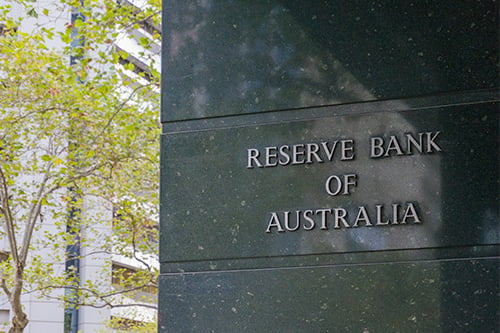Soaring property prices driven by low rates may be an endangered species

The Reserve Bank of Australia could decide to roll back some of its COVID-related stimulus programs this year, and some economists predict that RBA policy changes could lead to a spike in fixed-rate mortgage costs.
Last year, the RBA put forward a raft of policies to stimulate growth and inflation, including large-scale bond buying, slashing the cash rate to a record-low 0.1%, and direct lending to banks.
The RBA has said it expects the benchmark rate will remain at 0.1% for at least three years. But with the economy improving, David Plank, head of Australian economics at ANZ, told The Sydney Morning Herald that the expectation that the RBA will hold the line on interest rates for that long “may no longer be tenable.” And changes to the cash rate, along with a 0.1% target for the yield on three-year government bonds, will likely push up fixed mortgage rates.
“A big driver of the property market has been the collapse in fixed rates,” Plank said. “I think it looks increasingly likely that there will be higher fixed rates in the second half of this year, because I think the RBA will have to adjust the yield target in some way. Because things have rebounded so fast, the challenge for the RBA this year will be managing the evolution of monetary policy away from extraordinarily stimulatory settings to somewhat less stimulatory.”
Shane Oliver, chief economist at AMP Capital, has also predicted that fixed rates are at or close to their bottom thanks to recent increases in bond yields. A growing number of market watchers are also projecting that around the middle of the year, the RBA may face pressure to start winding back its “yield curve control” policy, which refers to its targeting of a three-year government bond yield of 0.1%. However, economists predict that quantitative easing will continue, predicting that the RBA will buy a further $100 billion in bonds over the next few months.
Read more: Digital bank sets record-low mortgage rate
Economists at National Australia Bank said last week that they expected the RBA to put forward an exit strategy from yield curve control around the middle of the year. Commonwealth Bank economists also predicted that the central bank could need to change its yield curve control target in the middle of the year, although they said that the impact of COVID-19 restrictions over the summer made this uncertain, the Herald reported.
Westpac chief economist Bill Evans said that he expected the RBA to continue saying it would likely keep rates on hold for three years until the end of 2021. After that, Evans said, the pledge would no longer be credible.
“I think they are pretty much committed to a tight labour market,” Evans told the Herald. “There’s no benefit in going too soon.”
The central bank’s recent policy shifts have led to banks slashing borrowing costs on fixed-rate mortgages – in some cases to less than 2% – driving a wave of refinancing and new loan approvals. When the RBA does start to roll back yield curve control, it could push fixed rates up.
However, banks are likely to continue to compete for market share through low fixed rates. Their funding costs have also been lowered by the central bank’s $200 billion term funding facility, which will be available until July.
The market’s focus on the RBA’s policy comes in the wake of figures released this month that show the unemployment rate fell from 6.8% to 6.6% in December, exceeding economists’ performance expectations.
However, market experts warned that the unemployment figures pre-dated the COVID-19 outbreak in Sydney’s northern beaches, the Herald reported. The outbreak led to tighter restrictions in Sydney and a round of state border closures and disruption to the tourism industry.



